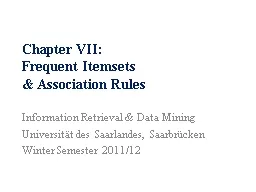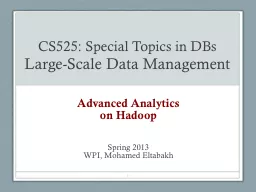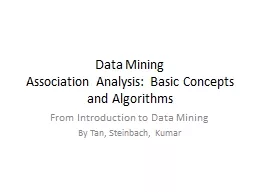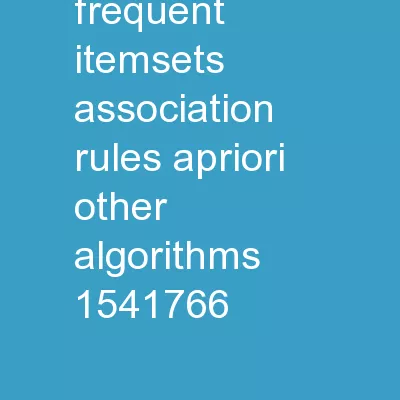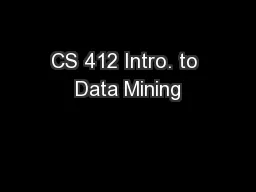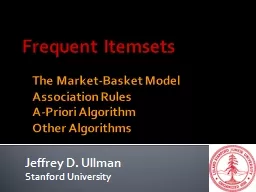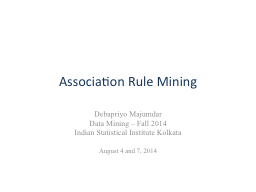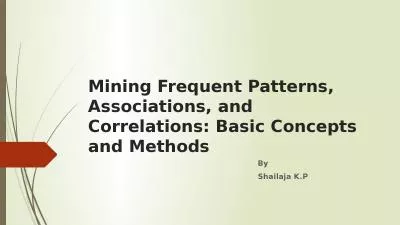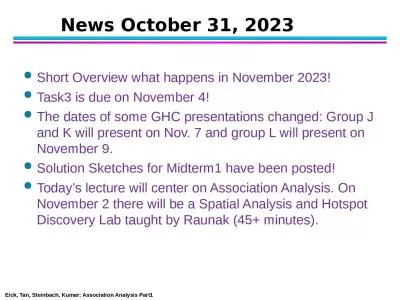PPT-Chapter VII: Frequent Itemsets
Author : natalia-silvester | Published Date : 2018-03-06
amp Association Rules Information Retrieval amp Data Mining Universität des Saarlandes Saarbrücken Winter Semester 201112 Chapter VII Frequent Itemsets amp
Presentation Embed Code
Download Presentation
Download Presentation The PPT/PDF document "Chapter VII: Frequent Itemsets" is the property of its rightful owner. Permission is granted to download and print the materials on this website for personal, non-commercial use only, and to display it on your personal computer provided you do not modify the materials and that you retain all copyright notices contained in the materials. By downloading content from our website, you accept the terms of this agreement.
Chapter VII: Frequent Itemsets: Transcript
Download Rules Of Document
"Chapter VII: Frequent Itemsets"The content belongs to its owner. You may download and print it for personal use, without modification, and keep all copyright notices. By downloading, you agree to these terms.
Related Documents

